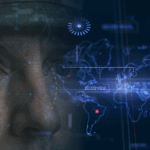But how do crime analysts incorporate data derived from OSINT solutions into their workflow to support crimefighting measures and investigations? An automated OSINT tool can not only provide that additional context but can automate the process and dig deeper beyond the publicly accessible online platforms, finding information in areas many analysts do not consider searching as part of their analytical efforts.
An artificial intelligence (AI)-powered, automated OSINT solution helps provide context to these three areas of a criminal investigation: person information, location data, criminal data.
Person Information: OSINT can assist law enforcement by providing insight into a victim or suspect’s personality or pattern of life before, during, or after a critical event. For example, their digital footprint can help analysts understand more about their interests, friends, colleagues, and family, potentially tying them to specific activity, connections to a victim, or an alibi. Analysts cannot obtain this type of unique background information from an internal document or database. Investigators may also never collect this information from interviews or canvassing at a scene.
Location Data: Location information can be gathered from digital media to give analysts additional information about ‘who and what’ is at a specific location or what is being said from or about a location. For instance, if a protest is happening at a location in a certain city, an analyst can scour the web for timely information shared online in forums or in chats regarding protest activity. The intelligence gathered from these online sources would likely never be found in official police records. Analysts can use OSINT in a proactive way to find out who is talking about a location or event online. By taking all available data – geospatial, RMS, public records, OSINT – law enforcement is better equipped to mitigate and respond to incidents with comprehensive analysis and intelligence from all these sources.
Criminal Data: Crime analysts can go beyond RMS data and case management notes with OSINT. They can find information about stolen goods online, as well as chatter about criminal activity and threats to commit a crime. Organized retail crime can be analyzed by supplementing incident reports with data from online marketplaces, virtual garage sales, or illegal storefronts operated by “fences.” This provides additional data related to the organized retail theft supply chain that does not exist in an RMS. By supplementing the RMS data analysis about a series of crimes or patterns with OSINT, analysts can provide detectives with meaningful information to help recover losses and close the case.














